Dear friends,
What do our creative spaces say about us? How do they shape the work we make? I’ve spent years photographing creatives in their studios, workspaces, and homes, and I keep coming back to the same question: how much does space influence creativity? Today I will share some lessons from photographing 600+ creative spaces.
This week’s Process is the first in a new quarterly series where I’ll dig into my archive using Excire’s AI-powered search to find photos around a specific theme. For this week, I picked: “creative work spaces”. Why? Because I am obsessed with them and have been photographing them for my entire career, for clients and personal projects.
We’ll also talk about what I’ve learned over the years about optimizing your own workspace, whether it’s a dedicated studio or a kitchen table.
My Creative Workspace Obsession
I’ve always been fascinated by the spaces where creative work happens. From massive industrial lofts to tiny home studios, the environment we create in is more than just a backdrop. It’s part of the process and affects how we work.
One of Many: My First Deep Dive
Back in 2014-2015, I spent a year photographing over 600 creatives in 12 cities across the U.S. for my project One of Many. The goal was to capture not just the people, but also the environments they worked in, from their desks, to their walls, tools, and the little details that made a space theirs. (See below, artist and furniture maker Michael Moran from the Charleston chapter of One of Many.)
This project effectively kicked off my career, accidentally and later led to some of my earliest commercial work, shooting for Knoll, Airbnb, Squarespace, and publications like Wired, The Washington Post, and National Geographic Traveller (See below, a two spread in NatGeo, from a series I shot in Jamaica.)
A Studio Space That Changed My Career
For years, I was lucky to share a Brooklyn coworking space called Friends Work Here (originally Studiomates), founded by designer Tina Roth Eisenberg. It was a hub of creativity, filled with designers, writers, filmmakers, photographers, and artists.
It was more than just a workspace. As cliché as it sounds, it really was a community. Over lunch breaks and impromptu desk visits, I found motivation, knowledge, and support. Whether I was stuck on a project or just needed a fresh perspective, there was always someone to bounce ideas off. That kind of human connection was invaluable. I miss it, working from home and on location these days.
As a bonus, the space was inside the same building as The Invisible Dog, a gallery and artist studio complex. Through it, I got to know artists like Jon Burgerman, Mac Premo, and Oliver Jeffers. (See below for Mac and Oliver.)
Seeing their studios and creative rituals shaped the way I thought about workspaces and how I tried to design my own. Every week, I learned something new. Whether it was about an artistic discipline outside my own or how people designed their environments to suit their work and skills.
Creatives In/AMS: A More Intimate Approach - 52 Essays
Fast forward to now, and I’ve spent the past three years working on Creatives In/AMS, which is a deep dive into the workspaces of Amsterdam’s creative community. Unlike One of Many, this series focuses on photo essays, capturing not just a single portrait but the full story of each space including their tools, their light, their clutter or lack of it. (See below, a photo of stained glass artist Robin Kapitein for Creatives In/AMS.)
Over the next year, I’ll be publishing 52 photo essays, one per week. I’ll also release a limited edition preview zine, which will be available in my shop soon. I’ll have a launch date shortly! (See front and back cover of the zine below.)
Three Things I’ve Learned About Creative Spaces
Over the years, I picked up a some pointers I’ve revisited every time I moved or set up a new workspace. I figured it might be helpful to share them here, so you can keep them in mind when setting up your kitchen table nook or studio, especially if you want to be intentional about how your space supports your work.
Your space should match your process — Some people thrive in clutter, others in minimalism. I’ve seen painters with chaotic, overflowing studios, and designers who keep their desks nearly empty. The key is knowing what works for you.
The best creative spaces evolve — The most interesting studios I’ve seen are never static. People rearrange, experiment, and adapt as their work shifts. Treat your space like a living thing that grows and adapts with you.
The people around you matter — Whether it’s a shared studio, a co-working space, or just a group of like-minded friends, creativity thrives in conversation. Some of the best ideas I’ve had weren’t mine. They were sparked by being around other people making things.
Three Ways to Optimize Your Creative Space (Even if It’s Just a Nook in Your Home)
Define a “start ritual” — Whether it’s making coffee, sharpening pencils, or lighting a candle, having a small habit that signals the start of creative work can shift your brain into focus mode.
Limit distractions physically — If you work in a shared space, noise-canceling headphones or a simple divider (even a bookshelf) can help create a mental separation between work and everything else. I am very easily distracted, so this one is key for me.
Make space for inspiration — Whether it’s a bulletin board, a shelf of favorite books, or a single framed image, having a visible source of inspiration keeps creative energy flowing. I always try to do this right in sight, past my monitor,
How Excire Helped Surface These Images
To pull this issue together, I used Excire’s AI-powered search to dig through my 200,000+ image archive. I ran searches for terms like “studio,” “workspace,” “desk,” and “tools” and it felt like opening a time capsule. I uncovered entire shoots I’d forgotten about, unexpected b-sides from shoots I did remember, and moments that would’ve stayed buried if I’d been searching manually based on my memory.
One example: I had a vague memory of the photo below on the far right, a saved screenshot, of me on the office swing at Friends Work Here, during one of our lunches, with two of our office dogs. I had no idea when it was taken or how I’d ever find it. But all it took was typing the prompt “man on swing petting two dogs” and boom!
For anyone managing a large archive like myself, a tool like this isn’t just nice to have. It’s a huge time and lifesaver. Everything runs locally, so none of my work gets uploaded to the cloud or used to train generative models, which matters a lot to me.
Big thanks to Excire for sponsoring Process this year and helping keep this newsletter sustainable, and for making a tool I use a few times a week in my own practice. I genuinely recommend you check it out here. Process readers receive 15% off with the coupon code "PROCESS" at checkout.
Thanks for reading. If you enjoyed this issue, share it with a friend.
Let’s keep shooting, learning, and sharing—one messy, human step at a time.
Warmly,
Wesley
NEXT WEEK: Lately, I’ve been curating a lot of incredible work by photographers and visual creatives for books, exhibitions, and a beautiful new magazine that just came out. I’ll share a few of those projects and highlight some of the work that inspired me. Plus, a $250 giveaway for film, lenses, and more with Moment.
This Week’s Gear and Lab
Camera: Pentax 67ii, Pentax LX, Pentax 645N, Contax G2, Hasselblad 500cm, Canon 5D Mark IV, and various iPhones.
Shout out to MPB.com, my go-to for buying and selling used gear—they’re fantastic. Easy, fast, and everything comes with a 6-month warranty.
Lab: My film is processed and scanned by Carmencita Film Lab, whose care and consistency I fully trust. They’re the best as a lab and as humans. Use code “PROCESS” at checkout for a free upgrade on your next order.
Support My Work and Elevate Yours
Enjoying Process? Support it by picking up a book or joining the Process Photo Club.
Process Workbook Volume One & Two: Creative prompts and assignments designed to get you out of your head and into action with your camera.
€8.99 each (free for Process Photo Club members)
NOTICE Journal, Volume One: A fresh perspective on beauty and rebirth, shot in Amsterdam.
€40 (or €20 for Process Photo Club members)
📚 Order here and you help keep Process accessible to all.

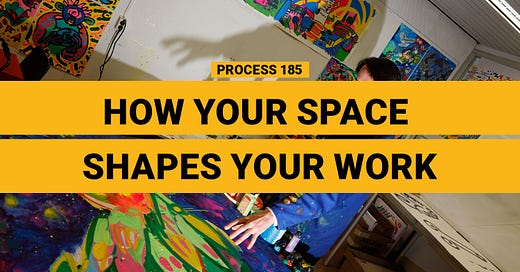

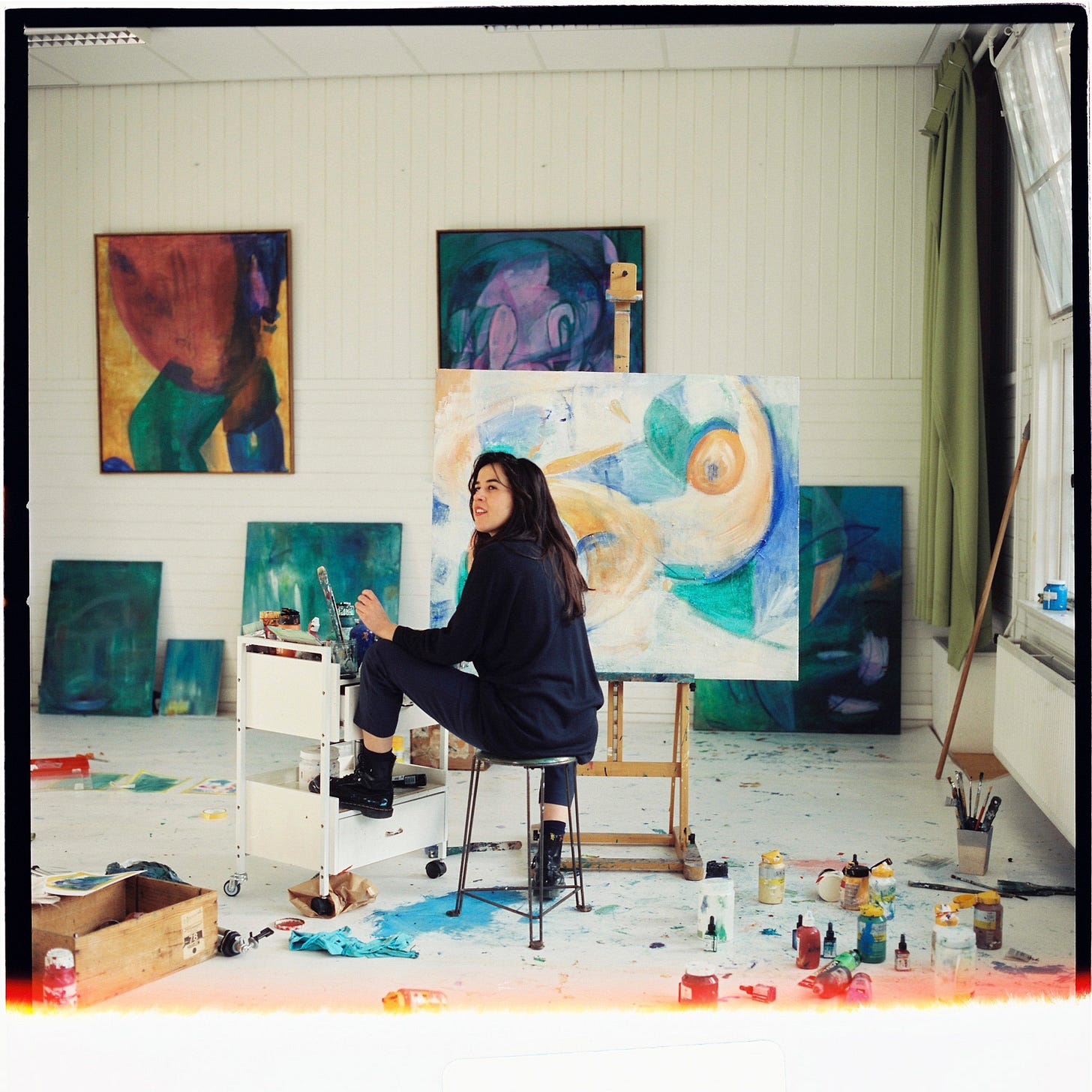
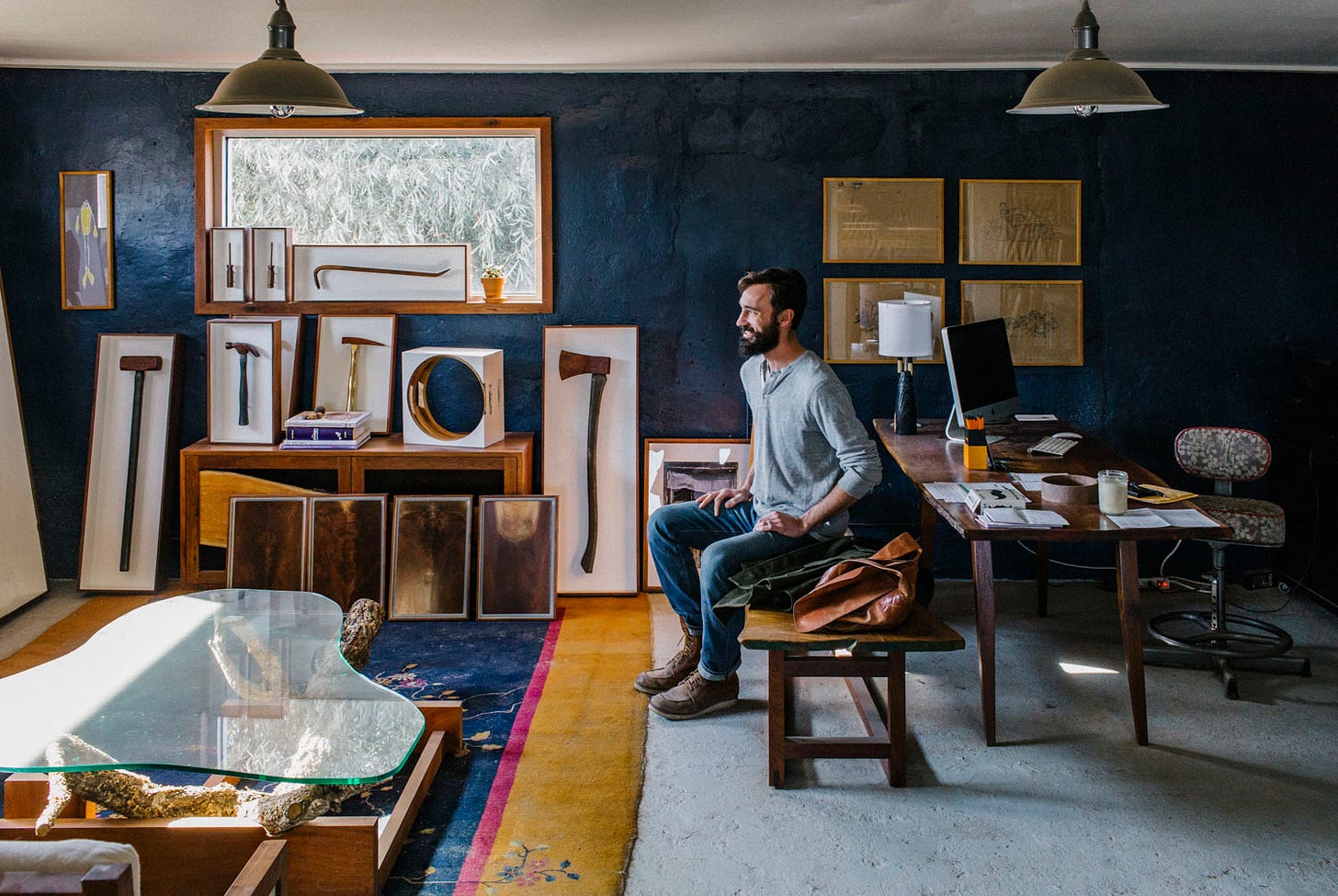
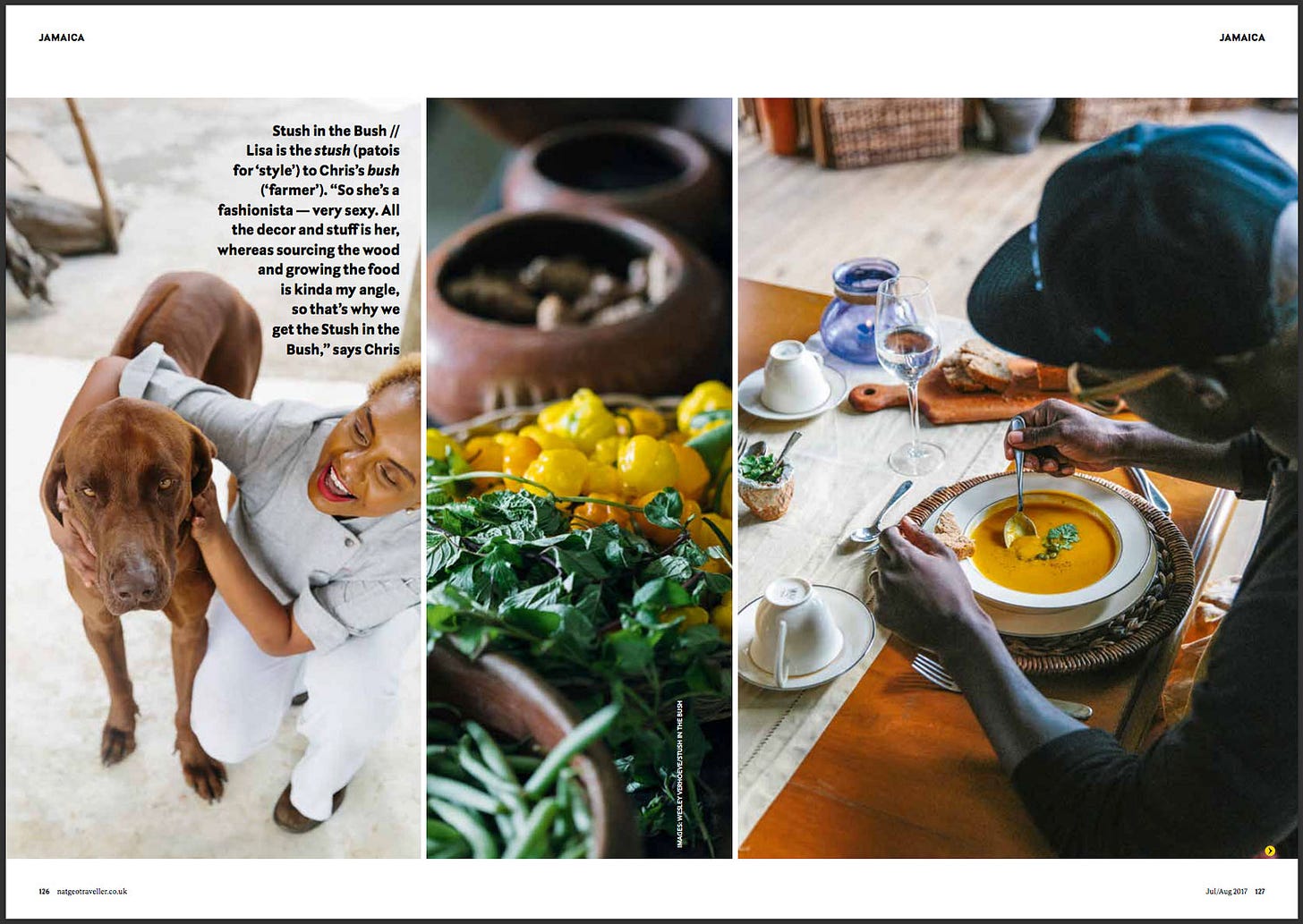
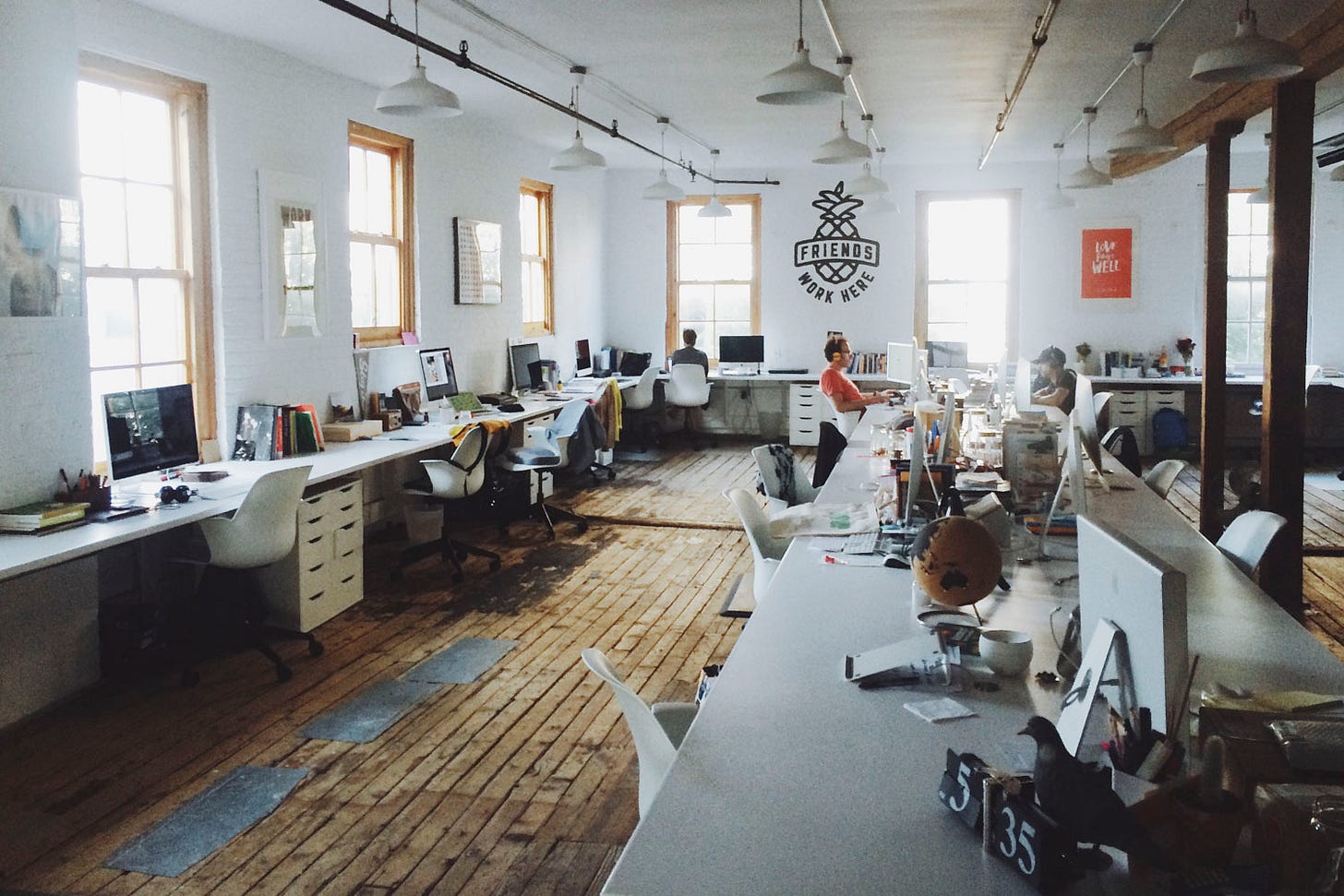
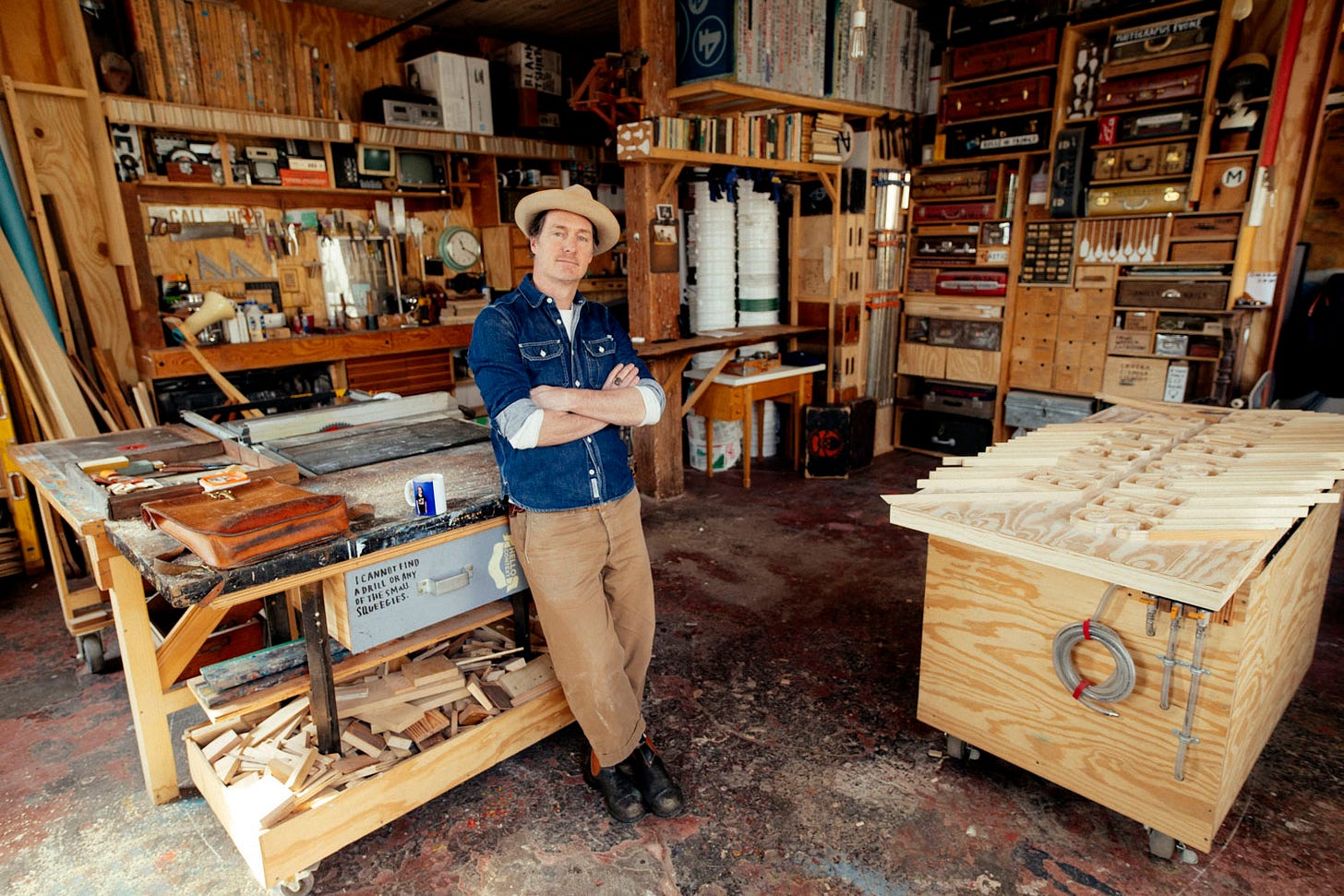
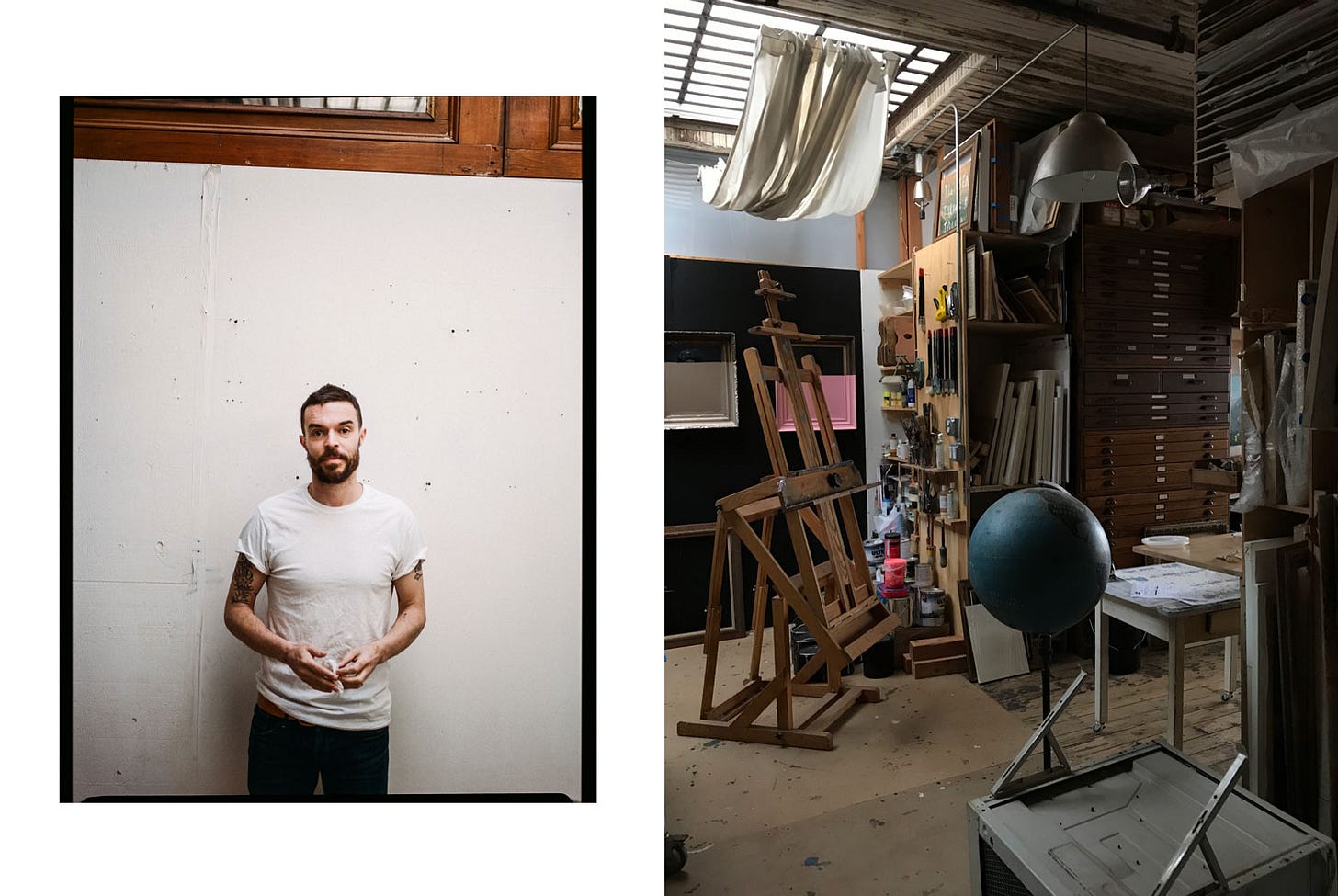
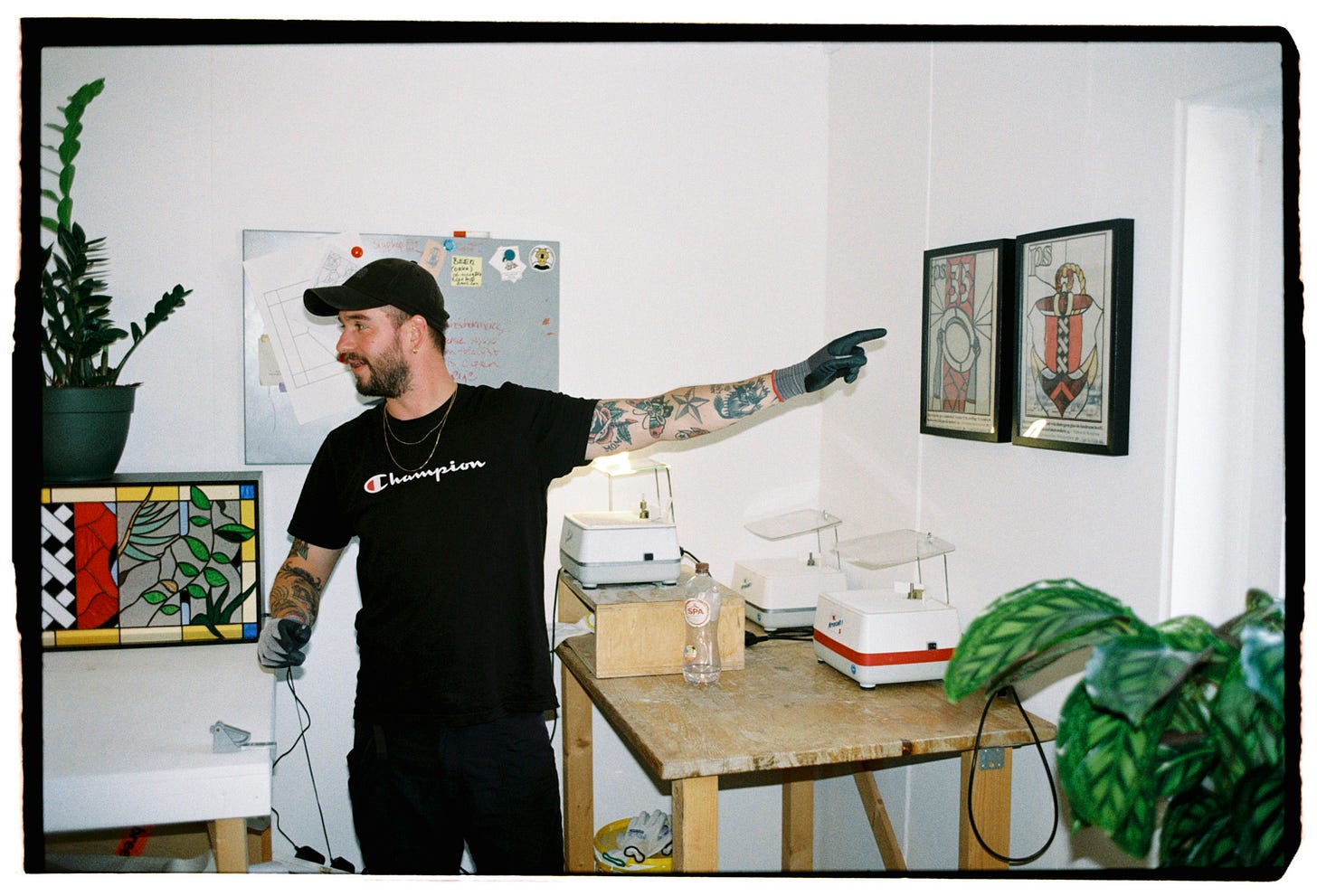
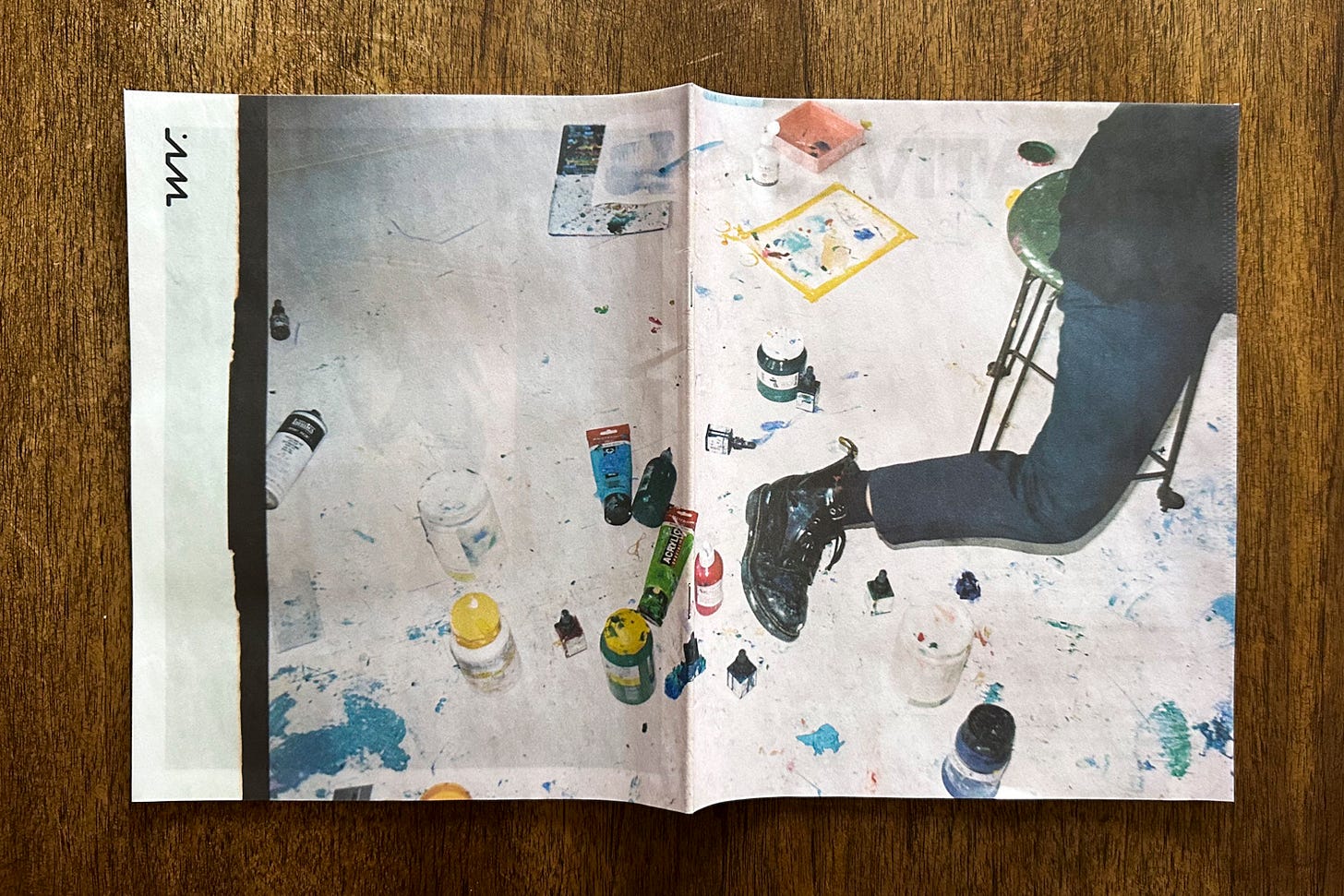
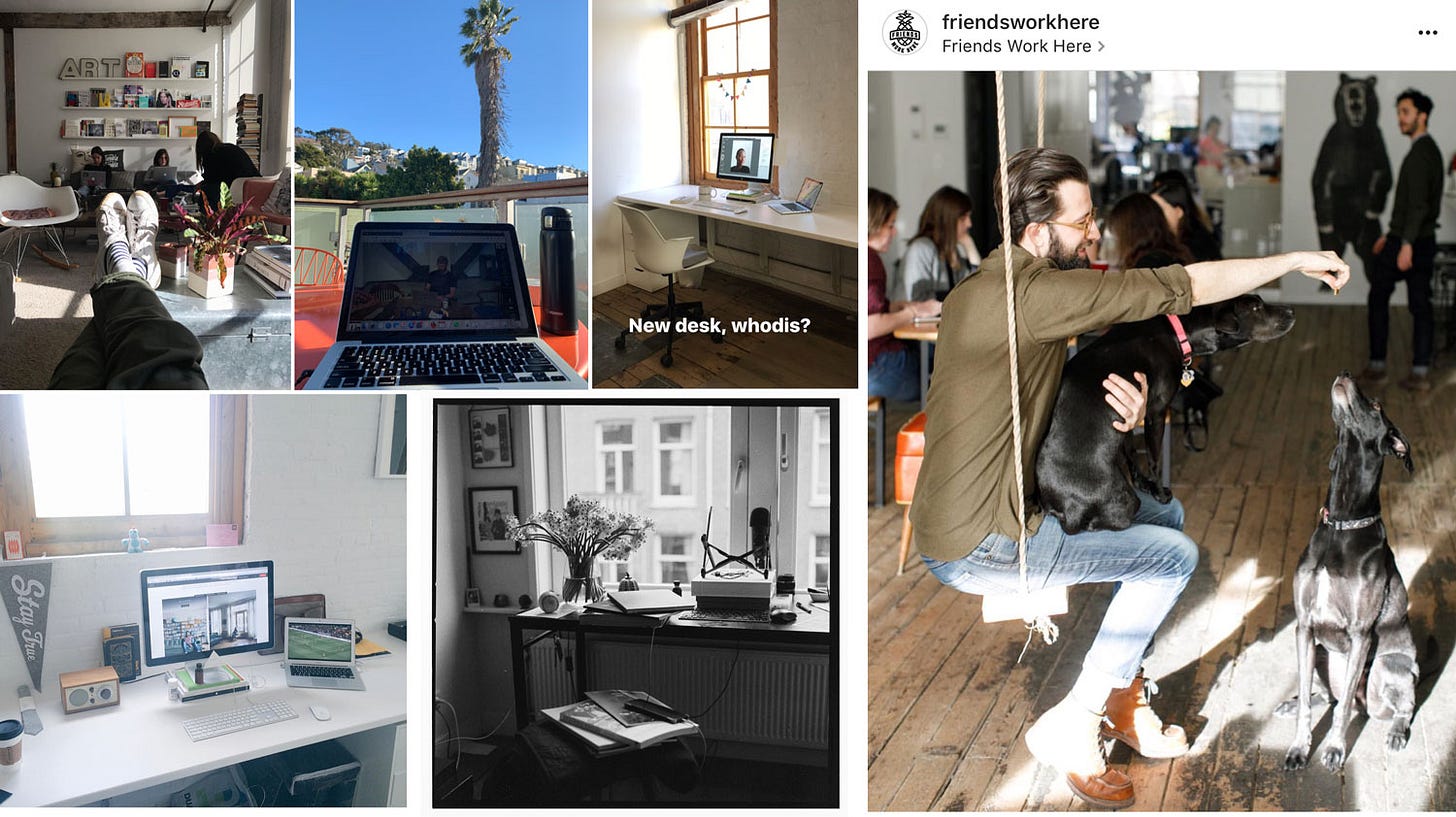
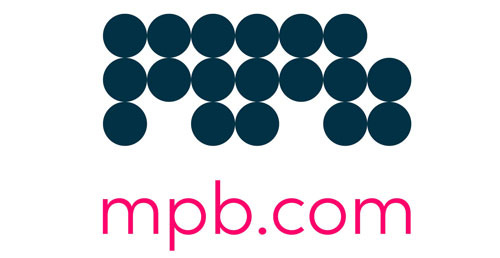

This was a great read. I take great pride in my workspace. Being a multidisciplinary artist both for my career and past times means my space has to accommodate a lot of different things, and it’s just a tiny room in my home so making sure It’s organized but also sparks creativity is crucial. It’s not perfect but it works, this post gave me some new ideas to help it along too. Thanks!!
What a great project. There's a guy I know who did something similar with artists of Scotland and it is so fascinating to see how their work is reflected in their workspace: https://www.jeremysuttonhibbert.com/portraits-artists-of-scotland